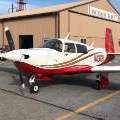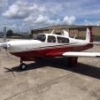Search the Community
Showing results for tags 'NTSB'.
-
Wondering what proportion of our pilots have been involved in an incident or accident that caught attention from authorities, media, or NTSB. You can vote anonymously if you don't want to talk about it. Or share some details of what it was like. Recommendations if were ever involved in something how to handle it? Get some wood out, knock on it, and then vote and share your thoughts.
-
They call the 70's the golden age of general aviation. I grew up in Wichita, "Air Capitol of the World," drove past the Beech and Cessna plants nearly every day and saw plenty of B-52s and F-4s flying out of McConnell AFB. But I just had a shocking revelation about just how dangerous those times were. I watched "We Are Marshall" this evening, and decided to check out the NTSB report for the crash that claimed 75 members of that football team in November 1970. Pilot flew into the ground on final approach, indeterminate cause, unsure whether there was instrumentation error, altimeter error, or just plain pilot error. Another military charter in Alaska killed 45 in similar circumstances. But then I started scrolling through the entire list of accidents from that month. 384 of them! Compare that to any given month in this century and it's probably three times as much. Granted, three times as many people flying, but the accident record is grizzly. I counted 4 mid-air collisions (that's 8 planes) including one with a Mooney. Lots of "VFR into IMC" type incidents, fuel starvation, the usual suspects. The causes of fatalities hasn't really changed in the last 40 years, but the frequency sure has. While there's no doubt the sheer population and number of flights impacted this number, I think it's equally clear that the technological safety advances we've made in GA have made have helped make us all safer. But if you're ever in need of a sanity check about the things to watch out for, I would encourage you to go back to any month during that time period and just scroll through the NTSB reports. Then go fly...but keep the fuel in the tank and the greasy side down!
-
NTSB Live today Webinar, 10/14/15 9am - 5pm FORBES STORY LINK: http://www.forbes.com/sites/johngoglia/2015/09/13/save-the-date-maybe-save-your-life-ga-pilots/ According to the NTSB’s press statement: “Topics addressed will include: an overview of the various types of loss of control accidents, human performance and medical issues, potential training improvements, and technological enhancements that can reduce loss of control accidents. The forum will feature presentations from pilots, instructors, general aviation advocacy groups, the FAA, and manufacturers of potential technological countermeasures, among others.” WEBINAR LINK: http://ntsb.capitolconnection.org/ watchable up to 90 days after event
-
In the March 1 issue of Gene Benson's Vectors for Safety, Gene laments that he is: ...very tired of reruns. No, I am not talking about TV shows. I spend plenty of time reading accident reports and I have not seen any really new programming in a very long time. In one accident report after another, pilots follow the same old tired scripts with only slight variations in the details. I could understand this if the pilots involved were new and inexperienced, not having the benefit of what is well-known about accident prevention. But that is usually not the case. We very frequently see highly experienced, knowledgeable, respected pilots showing up in the wrong column of statistics. The easy explanation is to blame overconfidence and complacency or an attitude of invulnerability. But doing some hard examination of a significant number of accidents, including accidents in which I have had personal friends killed, I am convinced that there is more going on. I think a deeper look into our humanness might reveal some explanations. He goes on to explain that pilots should think about the psychology behind accidents and he gives an example of what is known as choice blindness, which I will bet any pilot with a couple of hundred hours has probably experienced--I know I have. Most of the time we get away with it and Gene notes how a tail wind can be a validator. Enough of a tail wind and we get a pass for a bad descision. The hard part is overcoming our own humanity, working past the psychology that is trying to undermine us. Frankly, the best solution is to train and train hard. Frankly, just never quit training. When you are in the left seat with a CFII on your right, you immediately enter into the trainee consciousness. The downside of it is that you might get the feeling that if anything goes wrong you are covered. After all, you have god as your co-pilot, right? We could discuss the merits and demerits of that sort of thinking, but I'd rather concentrate on the upside. The upside is that you are on your best behavior. You damn well better go item-by-item through that checklist. Why aren't you dead on that altitude? You know the FAA allows 200 feet, but you also know your CFII only allows 50. Yeah, things are different when he's there. So, why not fly like he is always there?





